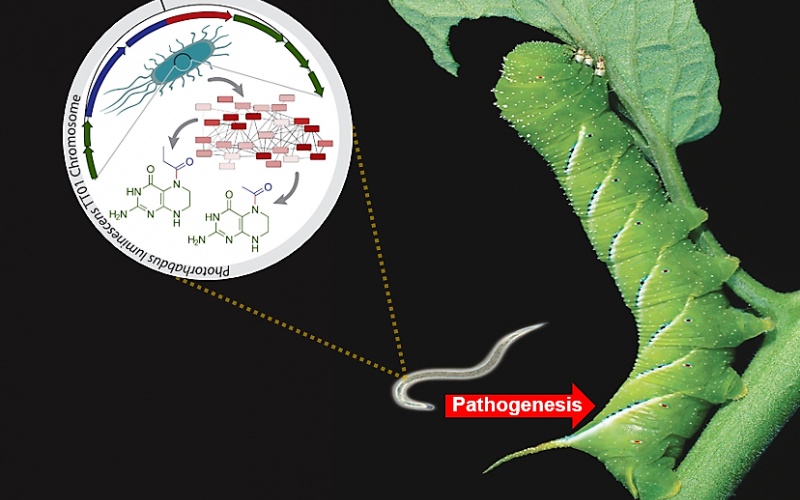By Jon Atherton
Scientists at the Yale Chemical Biology Institute have used genome mining to identify a new set of molecules that could be used as the basis for developing new drugs and probing new biological signaling phenomena in bacteria.
The instructions for the biochemical pathways that make these molecules are stored in the genome of the bacterium Photorhabdus luminescens, which produces antibiotics and other molecules that play a variety of roles in its lifecycle.
The bacteria live in the gut of roundworms, and the two species have a mutually beneficial relationship where they help each other acquire food. However, the bacteria are less friendly to the insects that the roundworms infect, releasing toxins that kill the insect.
Published in eLife, scientists partnering across the Chemical Biology and Systems Biology Institutes at Yale’s West Campus used genome mining to identify a biochemical pathway in P. luminescens that combines the pathways used to create two different types of small molecules produced by the bacteria.
This “hybrid” pathway produces a new set of molecules – called pepteridines – that are released by the disease-causing form of the bacteria.
Hyun Bong Park and Corey Perez, members of the Jason Crawford lab, identified a regulatory protein that controls the hybrid pathway. The protein is known to help the bacteria to change into the form that kills insects. Karl Barber of the laboratory of Jesse Rinehart also contributed proteomic analysis to the study.
The pathway also affects the production of proteins known to be involved in “quorum sensing”, where bacteria use chemical signals to report how many other bacteria are nearby, enabling them to launch coordinated biological responses – for example, releasing toxic molecules – when their numbers are great enough.
With the advancements in genome sequencing over the last decade, these instructions are becoming more readily available in sequence databases. “Genome mining” is a strategy that involves searching these databases to identify unknown biochemical pathways and help to characterize them.
In the future, applying a similar strategy to different organisms has the potential to uncover other pathways of biomedical relevance.
